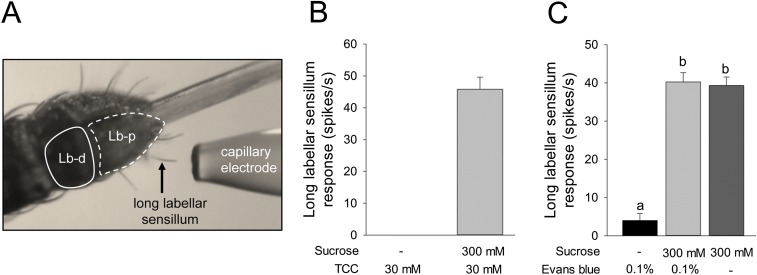Fig. S5.
(A) Photograph showing long labellar sensilla from which recordings were performed. A stimulus capillary electrode is positioned to cover one sensillum (arrow). Details are described in SI Materials and Methods. Lb-d, labellar distal segment; Lb-p, labellar proximal segment. (B) Responses of sweet-taste neurons in a single A. aegypti female labellar long hair sensillum to TCC electrolyte alone (30 mM) or sucrose solution (300 mM) with TCC. TCC as a control did not trigger spiking activity. (C) Responses (the number of spikes in the first second of a 2-s recording) of A. aegypti female labellar long hair sensillum to solutions of 0.1% Evans blue without or with sucrose (300 mM) or to sucrose alone (300 mM). The response to 0.1% Evans blue was insignificant, and the number of spikes per second did not differ in the other two treatments (300 mM sucrose + 0.1% Evans blue and 300 mM sucrose alone). One-way ANOVA with Tukey test; P < 0.05. Eight females were used.

